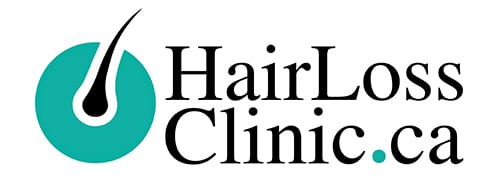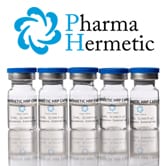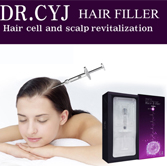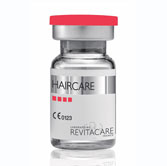
FOLLICULITIS | CAUSE & TREATMENT | HAIR LOSS CLINIC TORONTO

FREE ONLINE HAIR LOSS ASSESSMENT FORM
What is Folliculitis?
Folliculitis, commonly referred to as barber’s itch, is a prevalent skin condition that has affected numerous individuals worldwide. Its primary manifestation involves the infection of hair follicles, leading to various skin symptoms. The gravity and manifestation of these symptoms largely depend on the causative agents and the individual’s overall health.
What is Folliculitis?
Folliculitis is the swelling and infection of hair follicles, the small sacs that produce our hair. This condition is characterized by the emergence of tiny, pus-filled blisters, which can cause discomfort in the form of itching or pain. These blisters can grow unsightly if left untreated, affecting self-esteem and comfort.
Diverse Causes of Folliculitis
- Bacterial Infections
One of the primary culprits behind folliculitis is the bacteria, particularly Staphylococcus aureus. This strain of bacteria is naturally present on our skin but can turn problematic when it finds its way inside the hair follicle, usually via a minor cut or abrasion. Once inside, they can multiply rapidly, leading to the formation of pus-filled blisters.
- Fungal Infections
Fungi, such as those causing ringworm (a misleading name as it’s not caused by a worm but by a fungus), can also lead to folliculitis. This fungal form can present itself with itchy, scaly red bumps. People with compromised immune systems or those in humid environments are more susceptible to fungal folliculitis.
- Ingrown Hairs
Due to shaving, waxing, or wearing tight clothing, ingrown hairs can lead to folliculitis. Instead of growing outwards, the hair reverses its direction and starts growing back into the skin. This obstruction of the follicle can allow bacteria to penetrate the skin, causing swelling and infection.
- Viral and Other Causes
Certain viruses can also instigate folliculitis, less common than bacterial or fungal causes. Moreover, exposure to certain substances, like oils or tar, can clog hair follicles and trigger the condition.
Recognizing the Symptoms of Folliculitis
The symptoms of folliculitis can be quite diverse and might change based on the underlying cause:
- Appearance: The most common symptom includes small red or pinkish bumps around the hair follicles. These bumps can be filled with pus, giving them a white-tipped appearance.
- Sensation: Affected areas can become itchy, causing discomfort. In certain cases, these bumps can also be painful, especially when touched.
- Secondary symptoms: In more severe cases, the skin around the folliculitis bumps may become red, swollen, and radiate heat. There might also be blood or pus drainage, accompanied by a fever in some cases.
What Types of Folliculitis Are There?
There are many types of folliculitis. All are associated with inflammation, infection or irritation of the hair follicles. They can be superficial or deep. Deep folliculitis affects more hair follicles and has more severe symptoms.
| SUPERFICIAL (MILD) FOLLICULITIS | |
|---|---|
| Bacterial folliculitis | |
| Pseudomonas (Hot Tub) folliculitis | Pseudomonas aeruginosa, a bacteria flourishing in warm and damp environments, is responsible for hot tub folliculitis. This infection typically appears in hot tubs and heated pools that lack consistent or thorough maintenance, leading to infected hair follicles on the skin. |
| Pityrosporum folliculitis (Yeast Infection) | Pityrosporum folliculitis arises from an excessive growth and invasion of the hair follicle by the Malassezia yeast present on your skin. This yeast, which naturally exists on your skin, enters the hair follicles and results in eruptions on the skin's exterior. |
| DEEP (SEVERE) FOLLICULITIS | |
| Sycosis barbae | Pseudofolliculitis barbae predominantly affects African American men. Barber's itch is an infection caused by staph bacteria targeting hair follicles in the beard region, especially the upper lip. The condition exacerbates with shaving. On the other hand, tinea barbae is akin to barber's itch, but it arises from a fungal infection. |
| Boils | A boil is a skin ailment originating from a hair follicle or an oil gland. Initially, the affected skin area reddens, and a sensitive bump emerges. Between the fourth and seventh day, this bump begins to whiten due to the accumulation of pus beneath the skin. |
| Gram-negative folliculitis | Gram-negative folliculitis stems from an infection by gram-negative microbes. This condition often manifests as a side effect in individuals with acne vulgaris and rosacea, particularly in those who have been on long-term systemic antibiotics. It exhibits a pimple-like rash akin to acne and is frequently misidentified as an aggravated form of acne. Most commonly, patients already diagnosed with acne experience this condition. |
| Eosinophilic pustular folliculitis | Eosinophilic pustular folliculitis (EPF) is a dermatological condition marked by recurrent itchy, red, or flesh-toned bumps and pus-filled pustules. The disorder derives its name from the discovery of eosinophils, a specific immune cell type, surrounding the hair follicles in skin biopsies of the affected area. |
How to Prevent Folliculitis?
Prevention of Folliculitis:
Preventing folliculitis is essential not only for maintaining healthy skin but also for ensuring your overall well-being. With the proper precautions, you can minimize the chances of getting folliculitis, even though it’s both aesthetically unappealing and uncomfortable.
1. Prioritize Personal Hygiene:
- Keep Your Skin Clean and Dry: Maintaining a cleanliness routine is the primary line of defence against folliculitis. Ensuring your skin is clean and free from excessive moisture creates an environment where bacteria and fungi find it hard to thrive. It’s recommended to shower or bathe daily, particularly after sweating or engaging in activities that expose your skin to dirt or oils. After cleaning, it’s equally important to dry your skin properly, especially in areas prone to sweating, like underarms or groin.
2. Dress Smartly and Comfortably:
- Avoid Tight Clothing: Your clothes can play a pivotal role in skin health. Tight-fitting clothing can trap sweat and bacteria, causing friction and irritation. Over time, this can aggravate the skin and lead to conditions like folliculitis. Choose loose-fitting attire that allows your skin to breathe and remain free from excessive moisture and friction to counteract this.
3. Shaving Practices to Adopt:
- Use a Clean Razor: Shaving can sometimes exacerbate or even cause folliculitis if not done with care. Ensure that the razor you use is clean and sharp. Dull razors can tug at the hair, leading to cuts and nicks, which become an entry point for bacteria. To further minimize risk, never share razors, as this can transmit bacteria between users. Shaving along the grain of the hair can lessen the likelihood of hairs growing inward, contributing to the onset of folliculitis.
4. Be Cautious of Recreational Water Activities:
- Sanitation of Hot Tubs and Pools: If not maintained correctly, hot tubs and swimming pools can become a haven for bacteria and fungi. Before immersing yourself, ensure the facility follows regular cleaning and sanitation protocols. This becomes especially important for hot tubs, where the warm water can accelerate microbial growth. It’s a good practice to shower immediately after using such facilities.
5. Strengthen Your Immune System:
- Prioritize Immune Health: Your immune system is your body’s natural defence against infections, including skin conditions like folliculitis. A compromised immune system can leave you more vulnerable. Hence, it’s essential to focus on holistic health. Consuming a nutrient-rich diet can strengthen your immune system. Regular exercise keeps you fit and aids in immune system function. Lastly, ensure you get adequate sleep; rest is when the body repairs and rejuvenates itself.
How to Treat Folliculitis?
Treatment Options for Folliculitis:
The method of treating folliculitis largely hinges on the underlying cause and the extent of the condition. Some individuals might find their symptoms abating naturally without any intervention. Nonetheless, many require specific treatments to expedite healing and thwart the further spread of the infection.
-
Bacterial Folliculitis
Physicians usually recommend oral antibiotics when the infection is bacterial. This medication aids in eliminating bacterial agents and alleviating the associated inflammation. Along with oral medication, topical antibiotics in creams or ointments might also be suggested for direct application to the infected area.
-
Fungal Folliculitis
When the root cause is a fungus, antifungal treatments become the go-to solution. Just like with bacterial infections, antifungal medications can be taken orally or applied topically. These drugs aim to exterminate the fungus and stop the further proliferation of the infection.
-
Hot Tub Folliculitis
This specific type is often linked to the bacteria in unsanitized hot tubs. Direct treatments include directly applying or consuming antibiotics to target the bacteria causing the problem.
-
Pseudofolliculitis Barbae
Predominantly seen in the beard region, this variant of folliculitis is closely associated with shaving habits. To counteract this, it’s advised to immerse the beard area in warm water, followed by a gentle pat-down using a clean towel before every shave. In instances where the condition recurs frequently, laser hair removal might be considered as it offers a long-term solution by preventing the recurrence of ingrown hairs.
-
Home Remedies
Several home-based treatments can be employed for those with milder forms of folliculitis. These might include applying warm compresses to the affected areas, using over-the-counter antiseptic creams, or employing natural remedies like tea tree oil.
Ongoing Maintenance to help Prevent Folliculitis
Topical Treatments:
Salicylic Acid & Sulfur: Incorporate topical treatments that include salicylic acid and sulphur into your skincare routine. These ingredients are known for their exfoliating properties, helping to unclog pores and reducing inflammation.
Application: Use these treatments as directed, often once or twice daily, ensuring the skin is clean before application.
Antifungal Shampoo Regimen:
Antidandruff Shampoos: Ensure frequent washing using antidandruff shampoos. Look for those containing potent antifungal agents, such as ketoconazole, which effectively tackles yeast and dandruff-causing agents.
Usage Frequency: Depending on the severity of dandruff or skin condition, the shampoo can be used twice to thrice a week or as a dermatologist prescribes.
Physical Health and Stress Reduction:
Regular Exercise: Regular physical activity not only enhances overall well-being but also helps reduce stress, a potential aggravator of many skin conditions.
Holistic Approach: Consider incorporating relaxation techniques like meditation or yoga, which can further reduce stress.
Dietary Considerations:
Limiting Aggravating Foods: Restrict the intake of foods known to exacerbate skin conditions. This particularly includes greasy, fried, or excessively fatty foods.
Alternative Choices: Instead, focus on consuming a balanced diet of antioxidants, vitamins, and minerals to support overall skin health.
Best Practices:
Avoid Scratching: While the urge might be strong, resist scratching the bumps, as it can worsen the condition and introduce new bacteria.
Personal Hygiene Items: Refrain from sharing towels, facecloths, or any other personal hygiene items to prevent the spread of bacteria and other pathogens.
Shaving Carefully: It’s crucial to avoid shaving directly over the bumps. Regularly switch out razor blades to minimize the risk of infections. Always opt for a keen blade and consider applying shaving gel or cream for skin protection.
Post-Exposure Care:
Public Facilities: After enjoying public hot tubs or spas, thoroughly shower with soap. This helps to rinse off any potential contaminants and reduce the risk of infections.
Avoiding Oils:
Oil-Free Products: Steer clear of skincare products containing heavy oils. These can trap bacteria, leading to the inflammation of hair follicles.
Alternative Moisturizers: If moisturization is needed, opt for non-comedogenic products which don’t clog pores.
ADDRESS
600 Sherbourne St #605, Toronto, M4X 1W4
PHONE
(647) 492-9093
info@hairlossclinic.ca
WORKING HOURS
Mon-Sat 9:00 am - 8:00 pm
Sunday CLOSED
Q & A
What is Folliculitis?
Folliculitis is a dermatological issue that refers to the inflammation and subsequent infection of hair follicles, the tiny sacs in the skin where hair growth originates.
Diving Deep: What Triggers Folliculitis?
Various factors can result in folliculitis. Predominant causes encompass bacteria, particularly Staphylococcus aureus, fungi, certain types of viruses, and the issue of ingrown hairs where the hair curls back into the skin.
Identifying the Signs: What are the Manifestations of Folliculitis?
Those afflicted with folliculitis typically experience small, pus-encased bumps near the hair follicles. Accompanying these bumps are symptoms like pronounced redness, persistent itching, and a heightened sense of tenderness around the affected areas.
Contagious Nature: Can Folliculitis Spread?
Yes, folliculitis has the potential to be contagious, especially when the instigators are viral or bacterial infections. Direct skin-to-skin contact or sharing personal items can lead to its spread.
Diagnostic Procedures: How is Folliculitis Identified?
To ascertain if an individual has folliculitis, a dermatologist will carry out a detailed physical examination of the skin. They may also opt for a skin culture test to identify the causative agent in certain scenarios.
Navigating Treatment Options: How Can Folliculitis be Addressed?
The treatment regimen for folliculitis hinges on the type and intensity of the infection. Options may span oral antibiotics for bacterial cases, antifungal medications for fungal infections, and many home remedies. Over-the-counter solutions like topical antibacterial ointments, warm compress techniques, and specialized medicated shampoos might be advised.
Prevention Protocols: Is it Possible to Ward Off Folliculitis?
Proactive measures can be employed to deter the onset of folliculitis. Adhering to practices such as maintaining a consistent skin hygiene routine, donning non-restrictive clothing that allows the skin to breathe, and steering clear of unsanitary hot tubs or swimming pools can significantly reduce the risk.
Prevalence: How Common is Folliculitis?
Folliculitis is an exceedingly prevalent skin concern. It can affect a vast demographic, cutting across genders and age brackets.
Reading Beyond the Symptoms: Can Folliculitis Indicate Deeper Health Issues?
Occasionally, the emergence of folliculitis can be a harbinger of more intricate health problems. This might include conditions like HIV or compromised immunity. Thus, it’s imperative to approach medical professionals for a comprehensive assessment and consequent intervention.
Seeking Expertise: Is a Dermatologist Consultation Essential for Folliculitis?
While trivial instances of folliculitis can often be managed through home care, severe or recurrent episodes necessitate professional intervention. If the symptoms appear resistant to home-based or over-the-counter treatments, or if one suspects an underlying health condition, promptly consulting a dermatologist is paramount for an accurate diagnosis and apt treatment plan.
Conclusion
Folliculitis, characterized by the inflammation and infection of hair follicles, remains a pervasive skin concern that affects a diverse range of individuals, irrespective of age or gender. Its manifestation—small, pus-filled bumps surrounded by red, itchy, and tender skin—can be a cosmetic and comfort concern.
The origins of folliculitis are multifaceted. While bacteria, especially Staphylococcus aureus, is a prominent culprit, the condition can also emerge due to fungi, viruses, or physically-induced problems like ingrown hairs. This wide range of causes underscores the need for accurate diagnosis and tailored treatment strategies.
The contagious nature of certain types of folliculitis adds another layer of complexity, necessitating careful personal hygiene and caution in shared spaces like pools or spas. Early detection and intervention are crucial to alleviate immediate symptoms and prevent potential complications, including scarring or recurrent flare-ups.
While many cases of folliculitis can be managed with over-the-counter treatments or home remedies, it’s essential to recognize when professional medical intervention is needed. Some instances, particularly those that are recurrent, resistant to treatment, or indicative of a broader health concern, mandate a comprehensive approach guided by a dermatologist.
The good news is that the risk of folliculitis can be substantially reduced with the right preventive measures—from optimal skin hygiene and choosing appropriate clothing to maintaining a strong immune system. In sum, while folliculitis might be a common skin ailment, with informed choices, timely interventions, and a proactive approach to skin health, its impact can be minimized, ensuring that it remains a temporary inconvenience rather than a chronic concern.
FIND A TRICHOLOGIST IN TORONTO GTA

Are you experiencing any hair loss or scalp issues? Get a Certified Trichologist to assess and help treat your condition in Toronto and Greater Toronto Area. Please complete our online Trichology Assessment Form to get started now.
With the numerous available treatments for hair and scalp conditions our Trichologist can recommend the best treatment that can help. At the Trichology Centre, we have helped patients with all types of hair and scalp conditions, advising them the best treatments available and helping them regain their confidence and self-esteem. Early assessment and treatment from the onset of the hair and scalp condition is important and can help prevent the condition to worsen.
We have two clinics in the Toronto GTA,
TRICHOLOGY CENTRE | hairlossclinic.ca | prptherapy.ca | hairtattoo.ca | laserhairtherapy.ca
600 Sherbourne St #605, Toronto
8763 Bayview Ave #5, Richmond Hill.
Please give us a call at 647-492-9093
Comments are closed.














